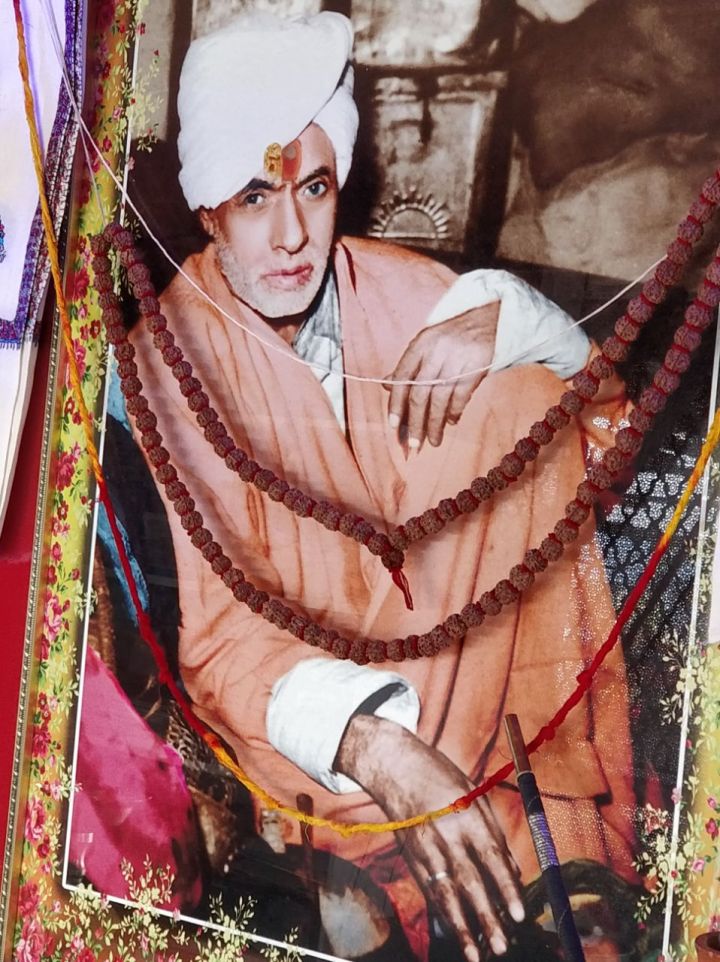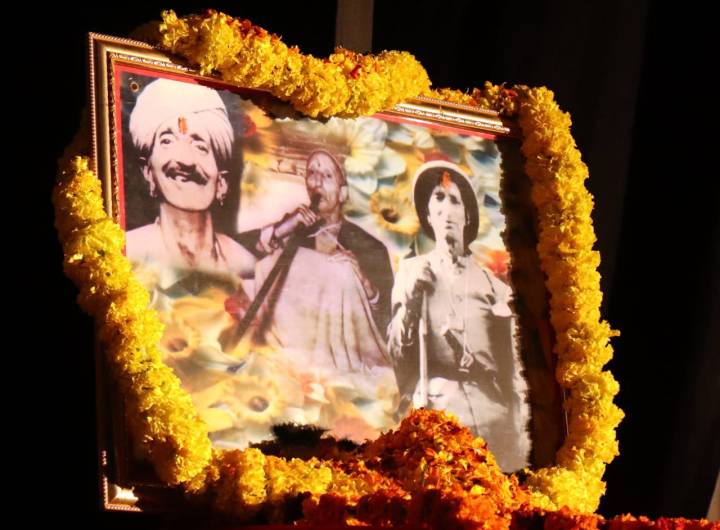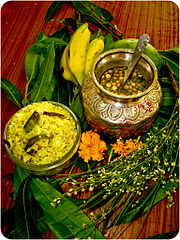Friday, April 8, 2022
Thursday, April 7, 2022
Datta Mandir, Uri, Baramulla District, Union Territory of Jammu and Kashmir

Sir Marc Aurel Stein, a Hungarian-born British archaeologist is credited with mapping all the ancient sites in Kashmir during one of his many expeditions in the 1900s. Also considered by many to be a great Indologist, Aurel Stein was a Sanskrit scholar and translated the famous Rajatarangini written by the Kashmiri historian Kalhana.
That century-old map is the key to understanding the wealth of Hindu heritage and culture that Kashmir was once renowned for. One of the most famous monuments documented by many archaeologists, historians and architects is the Datta Mandir located at Boniyar near Uri in Baramulla district.
Datta Mandir is actually Detha Mandir Bandi according to the Archaeological Survey of India (ASI) and is believed to have been built in the 10th century in the typical Kashmiri style of architecture. There is a very old photograph taken by a renowned botanist, Ralph. R. Stewart in 1913 which shows the ancient Datta Mandir under repair.
Legend has it that this temple was actually built by the Pandavas during their exile. The stones used to build this temple was carried by Bheema all the way from the nearby mountains. This temple is situated on the banks of Vitasta River (Jhelum River) and dedicated to Lord Vishnu.
There is an interesting ‘Bheem ka matka’ which is a huge clay pot in which Bheema used to fill water from the Vitasta River for Draupadi and his brothers every day. You can see the clay pot is at least 5 feet deep if not more. This is considered to be an extraordinary water source as the water level never reduces no matter how much water you take out. The water from this ‘matka’ is used for the daily rituals.
This magnificent temple was desecrated in 1947. A lot of the ancient idols were damaged and religiously significant motifs and ornaments were stolen. The Indian army installed a beautiful marble Shiva in 1992.
Unfortunately, there is not much information available about this sacred temple. Datta Mandir like most of the Hindu temples in Kashmir has incurred immense damage but its glorious past cannot be forgotten.
Written by Lakshmi Subramanian
* Photos are only symbolic (Taken from public domain/internet and any copyright infringement is unintentional and regrettable)
Friday, April 1, 2022
Ugadi
Ugadi
| Ugadi | |
|---|---|
 Ugadi Pachadi with New Year prayer puja tray | |
| Also called | Yugadi, Samvatsaradi Telugu and Kannada New Year |
| Observed by | Hindus in Telangana, Andhra Pradesh, Karnataka, Telugu diaspora,Kannadigas |
| Type | Religious (Hindu), social, cultural |
| Celebrations | Muggu-Rangoli, visiting Temples, Feast with Holige and Bevu Bella |
| Date | caitra māsa, śukla pakṣa, prathama tithi |
| 2021 date | 13 April (Tue) |
| 2022 date | 2 Apr (Sat) |
| 2023 date | 22 Mar (Wed) |
| Frequency | Annual |
| Related to | Gudi Padwa Marathi New Year's day |
Hindu festival dates | |
| Part of a series on |
| Hinduism |
|---|
 |
|
|
|
|
|
|
|
|
|
|
Practices |
|
|
|
|
|
|
|
|
Society |
|
|
Ugadi or Yugadi, also known as Samvatsarādi (lit. 'Beginning of the Year'), is the New Year's Day according to the Hindu Calendar and is celebrated in the states of Andhra Pradesh, Telangana, and Karnataka in India.[1] It is festively observed in these regions on the first day of the Hindu lunisolar calendar month of Chaitra.[2] This typically falls in April month of the Gregorian calendar.[2]And also It is falls in Tamil month Panguni or Chithrai (Sometimes) on Day after Amavasya with 27th Nakshatra Revati. Interestingly, Ugadi day is pivoted on the first New Moon after March Equinox.
The day is observed by drawing colourful patterns on the floor called Muggulu, mango leaf decorations on doors called torana, buying and giving gifts such as new clothes, giving charity to the poor, oil massage followed by special bath, preparing and sharing a special food called pachadi, and visiting Hindu temples.[3][4] The pachadi is a notable festive food that combines all flavors – sweet, sour, salty, bitter, astringent and piquant. In Telugu and Kannada Hindu traditions, it is a symbolic reminder that one must expect all flavors of experiences in the coming new year and make the most of them.[5] Followers of the Souramana calendar system, observe Ugadi in Karnataka, when the Sun transits into the Aries Constellation, which is also the festival of Baisakhi, and is locally known as Souramana Ugadi or Mesha Sankranti.[6]
Ugadi has been an important and historic festival of the Hindus, with medieval texts and inscriptions recording major charitable donations to Hindu temples and community centers on this day.[7] The same day is observed as a New Year by Hindus in many other parts of India, such as Gudi Padwa in Maharashtra and is a national public holiday in Mauritius
Practices
The Kannada, Kodava, Telugu and the Tulu diaspora in Andhra Pradesh, Karnataka and Tamil Nadu celebrate the festival with great fanfare; gatherings of the extended family and a sumptuous feast are 'de rigueur'. The day begins early with ritual showers, rubbing the body with perfumed oil, followed by prayers.[4]
Preparations for the festival begin a week ahead. Houses are given a thorough clean.[4] People buy new clothes and Dhoti and buy new items for the festival, decorate the entrance of their houses with fresh mango leaves.[3] Mango leaves and coconuts are considered auspicious in the Hindu tradition, and they are used on Ugadi. People also clean the front of their house with water and cow dung paste, then draw colorful floral designs.[3] People offer prayer in temples. The celebration of Ugadi is marked by religious zeal and social merriment.[12][5][13][14] According to Vasudha Narayanan, a professor of Religion at the University of Florida:[15]
Special dishes are prepared for the occasion. In Karnataka eatables Holige, Obattu and mango pickles are made .In Andhra Pradesh eatables such as "pulihora, bobbatlu (Bhakshalu/ polelu/ oligale), New Year Burelu and Pachadi" and preparations made with raw mango go well with the occasion. Of these, pachadi (or Ugadi pacchadi) is the most notable, and consists of a chutney-like dish which combines ingredients to give all six flavours of food (షడ్రుచులు - ṣaḍruculu) : sweet (తీపి - tīpi), sour (పులుపు - pulupu), salty (ఉప్పు - uppu), spicy (కారం - kāraṁ), bitter (చేదు - cēdu) and astringent (వగరు - vagaru).[16] This festive Hindu food is made from tamarind paste (sour), neem flowers (bitter), brown sugar or sweet jaggery (sweet), table salt (salt), green chilli (spicy) and raw mango (astringent). It is a symbolic reminder of complex phases of life one should reasonably expect in the new year.[15][1The pacchadi festive dish symbolically reminds the people that the following year – as all of life – will consist of not just sweet experiences, but a combination of sweet, sour, salty, and bitter episodes. Just as the different substances are bound together, one is reminded that no event or episode is wholly good or bad. Even in the midst of bitter experiences, there are sweet moments. One is also reminded that the experience of taste is transitory and ephemeral; so too, is life, and one has to learn to put pain and pleasure in proper temporal perspective.[5]




